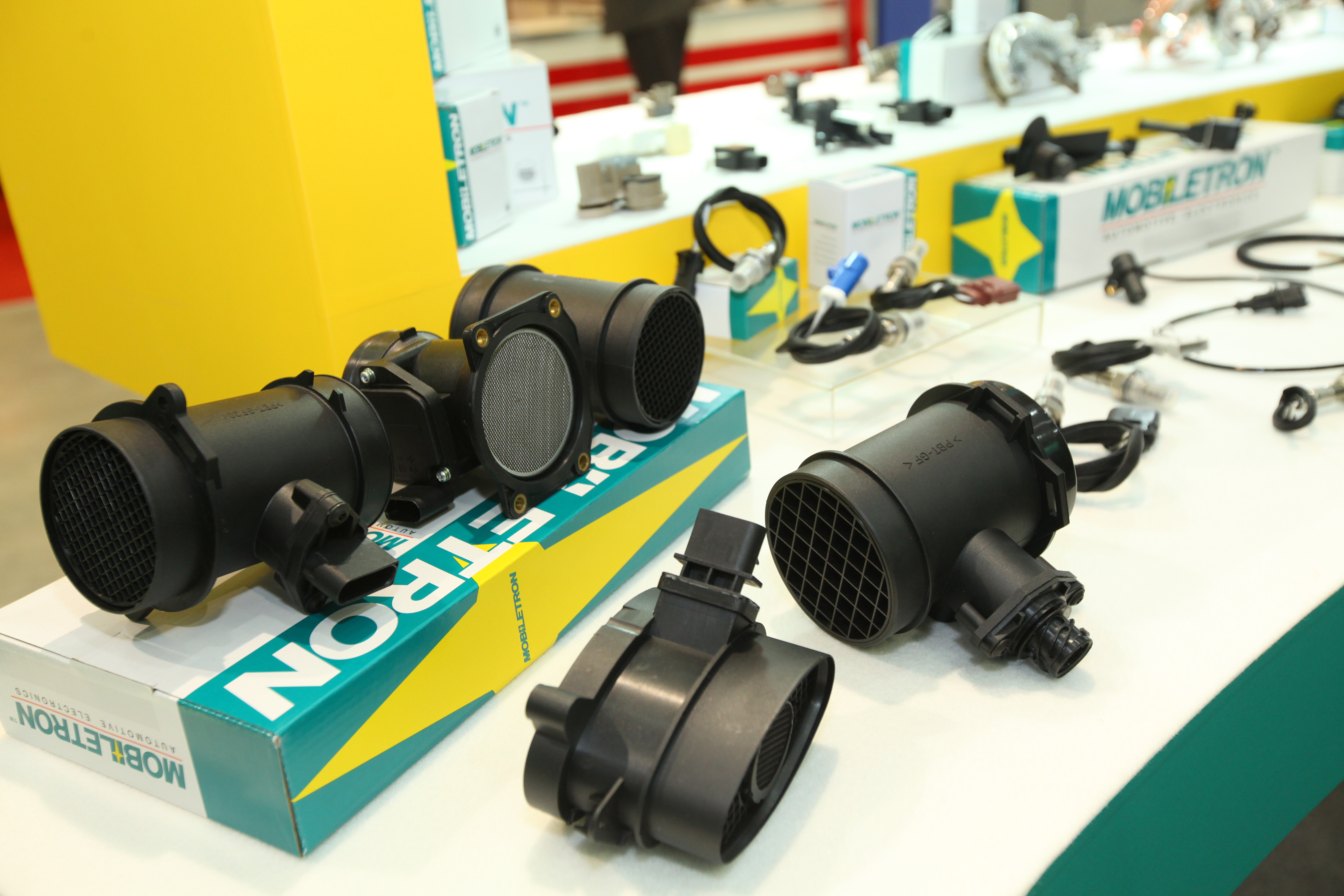Taiwan's Transportation Vehicle Production Holds Steady in Q1
2013/08/30 | By Quincy LiangWeak consumer confidence and slow economic growth contributed to a 3.1% quarter-on-quarter (QoQ) drop in the production of cars and powered two-wheeler (PTW) and parts in Taiwan in the first quarter of 2013. Nevertheless, the industry ended the quarter with a 1.9% year-on-year (YoY) gain to reach NT$106.4 billion (US$3.55 billion), according to the IEK Industrial Economics & Knowledge Center (IEK)-ITIS (Industry & Technology Intelligence Services) in Taiwan.
Overall auto-parts production value in the first quarter increased by 1.4% QoQ and 6.0% YoY despite poor weather in North America, Taiwan's biggest export market for aftermarket (AM) auto parts.
Shortage of key systems and parts for hybrid electric vehicles (HEVs), as well as stagnant domestic sales of e-scooters slashed local EV production value, including value generated from locally-produced Toyota Camry hybrids and electric scooters, by 38.8% QoQ and 37.8% YoY.

Assembled Vehicles
The production value of assembled automobiles dropped 8.7% QoQ and 1.2% YoY to end the first quarter at NT$44.3 billion (US$14.8 billion). New car sales in January continued a strong trend from December 2012, but the long Chinese New Year holidays in February, and a wait-and-see consumer mindset when the Japanese Yen began depreciating, made consumers hesitant to open their wallets.
Auto Parts
Peak-season demand and steady exports to major markets such as China, North America, and Association of Southeast Asian Nations (ASEAN) powered the revenue of many listed auto-parts makers higher in the first quarter. Taiwan's auto-parts production totaled NT$51.89 billion (US$1.73 billion), up 1.4% QoQ and 6.0% YoY. The recovering demand for AM replacement parts from North America, such as bumpers, auto lamps, sheet-metal body parts, electrical parts and electronics, compensated for decreased shipments to Europe.

Sales of new PTWs in Taiwan fell in the first quarter due to the winter-spring off-season, but most PTW makers ramped up production and inventories in preparation for the peak season from the second quarter. During the quarter, PTW production totaled NT$10.1 billion (US$336.7 million), up 0.7% QoQ, but down 3.6% YoY.
EVs
Willingness among Taiwan consumers to replace aging vehicles with environment-friendly and fuel-efficient hybrid cars helped to boost demand for such models. The locally produced Toyota Camry hybrid is the most popular hybrid on the island and more than 50% of Camry buyers opt for the dual-fuel model. However, the supply shortage of key parts from Japan, resulting from strong sales of Toyota hybrid cars worldwide, limited the local assembly volume. In the first quarter, monthly shipments of Camry hybrids dropped by 38.8% QoQ.

1. The depreciating Japanese Yen has led to consumer expectations that car prices will drop. The Ministry of Economic Affairs (MOEA) invited 11 local automobile companies in partnership with Japanese technical partners for a meeting in the first quarter. The two sides signed a joint announcement consistent with the MOEA's policy to cut their prices or provide more preferential purchasing terms reflecting the foreign-exchange difference.
IEK-ITIS Analysis
Anticipation of price cuts on Japanese cars deterred domestic consumers from buying new cars in February and March, though new-car sales in January remained strong from December 2012. Some Japanese car brands announced plans to freeze planned price increases in the first quarter, while some decided to cut vehicle prices by 3% to 6% in March. In an attempt to stimulate demand, all major auto brands have rolled out consumer incentives, such as zero-interest loans and extended product warranties since March.
2. Demand for AM replacement parts has been smooth, while Taiwan's exports of original equipment (OE) auto parts to global automakers have been increasing. Thanks to strong demand from China for OE parts, as well as recovering demand for AM collision parts from North America, many listed auto-parts makers reported good result, in some cases record highs, in the first quarter.
IEK-ITIS Analysis
Almost all major auto-parts makers in Taiwan are eyeing China, the world's largest automobile market since 2011, and plan to invest heavily to expand production capacity across the Taiwan Strait. The ebbing of anti-Japan consumer sentiment in China is also driving up demand for Japanese cars.
3. Aeon Motor Co., Ltd., which exports large-displacement ATVs and PTWs to customers in the U.S. and Europe, turned its attention to the domestic market with the debut of several scooter models. To further expand domestic sales, other major players, such as Kwang Yang Motor Co., Ltd. (KYMCO brand) and Sanyang Industry Co., Ltd. (SYM), have been expanding service points on the island. The European PTW market has been shrinking for more than three years in a row. Both KYMCO and SYM, as a result, have been forced to boost domestic sales to compensate flagging shipments to Europe.
4. Some local companies are reportedly developing extended range EVs (EREVs), which generally can run for a range of more than 600 kilometers, eliminating the range anxiety of EV adopters. As most industry experts deem that battery electric vehicles (BEVs) will not gain high popularity by 2020, EREVs are generally deemed as a potential transitional product before the BEV era arrives in full force.
Sales of plug-in hybrid electric vehicles (PHEVs) have outperformed BEVs in advanced economies. In 2012, for example, sales of PHEVs in the U.S. accounted for more than 50% of EV sales. Taiwanese companies developing and making EV-related systems and parts generally lack the chance to have their products certified for PHEVs because the island has not mapped out a testing platform for PHEV models. This also makes it more difficult for them to tap into the international PHEV market. In conjunction with local assembled-vehicle makers jumping onto the PHEV bandwagon, local PHEV system and parts makers are expected to have a better chance to develop business in this segment in the future.
Prospects
Assembled Vehicles: According to the IEK-ITIS, the introduction of new car models and more consumer incentives are expected to help automakers clear out inventories of older models. It is estimated that many potential car buyers decided to get off the fence and purchase new vehicles in the second quarter, leading to forecasts of assembled-vehicle production value at NT$47.09 billion (US$1.57 billion) for the quarter, up 6.3% QoQ.
Auto Parts: Several negative factors are expected to keep local production of auto-parts flat in the second quarter at about NT$52 billion (US$1.73 billion). Among these are weakness in the European and global economy, the depreciating Japanese yen, which weakens the cost competitiveness of Taiwan-made parts, and better weather in the Northern Hemisphere with the arrival of summer.
PTWs: Most PTW vendors in Taiwan are optimistic about their sales in the second quarter as this is typically a peak demand season and growth trends began to point up in the first quarter. Many PTW makers have raised their sales goals. In the second quarter, Taiwan's PTW production value is forecast to rise 16% QoQ and 0.6% YoY to reach NT$11.78 billion (US$392.7 million).
EVs: In 2013, the Ministry of Transportation and Communications (MOTC) began offering NT$115,000 (US$3,833) subsidies for the replacement of old internal combustion engine taxis with new hybrid models. This measure and the increasing popularity of hybrid cars in Taiwan is expected to boost EV (including e-scooter) production on the island to NT$2.17 billion (US$72.3 million).




